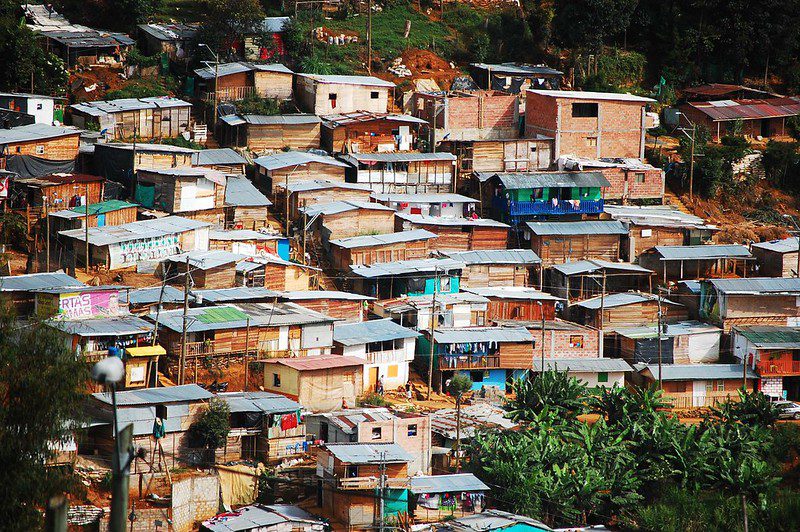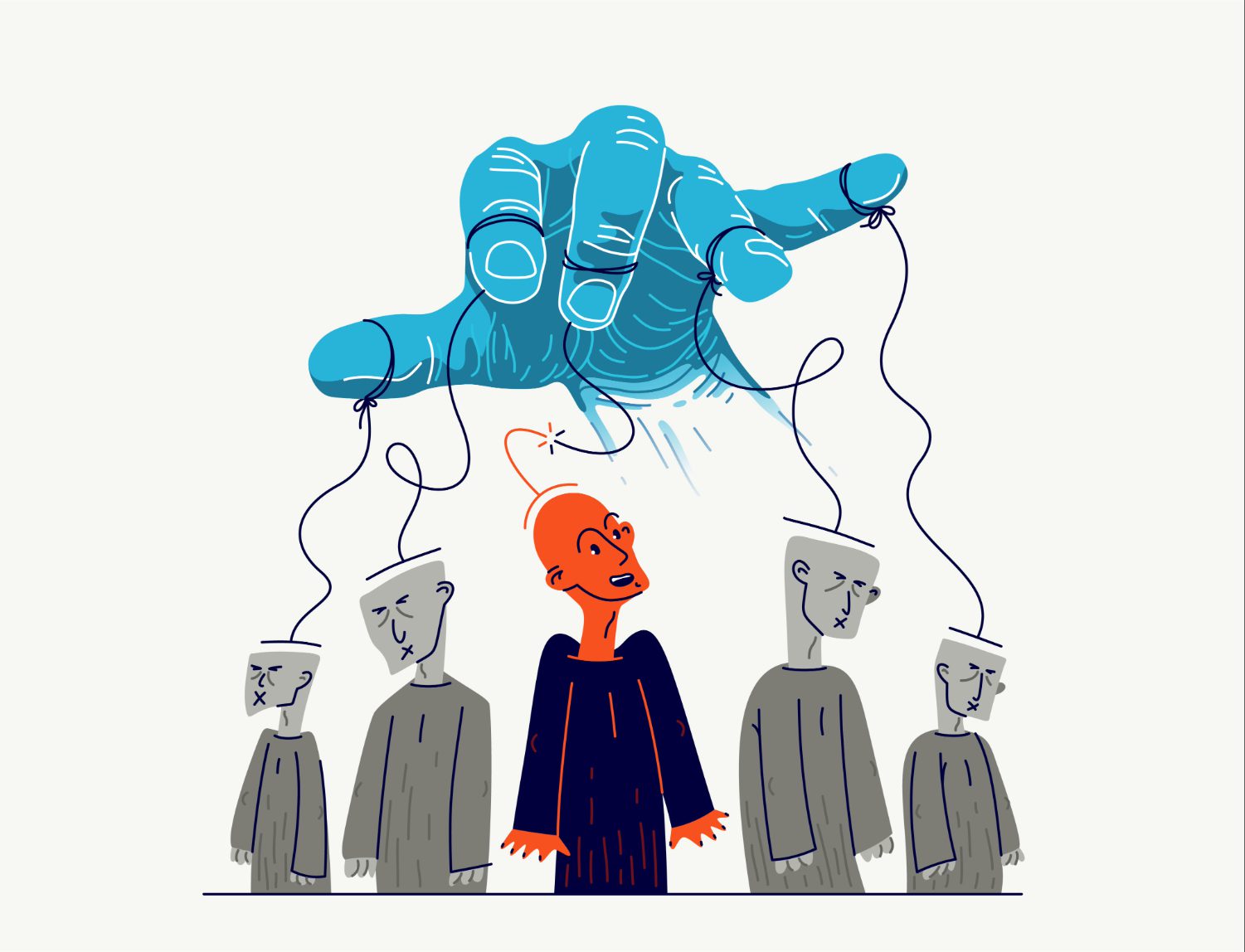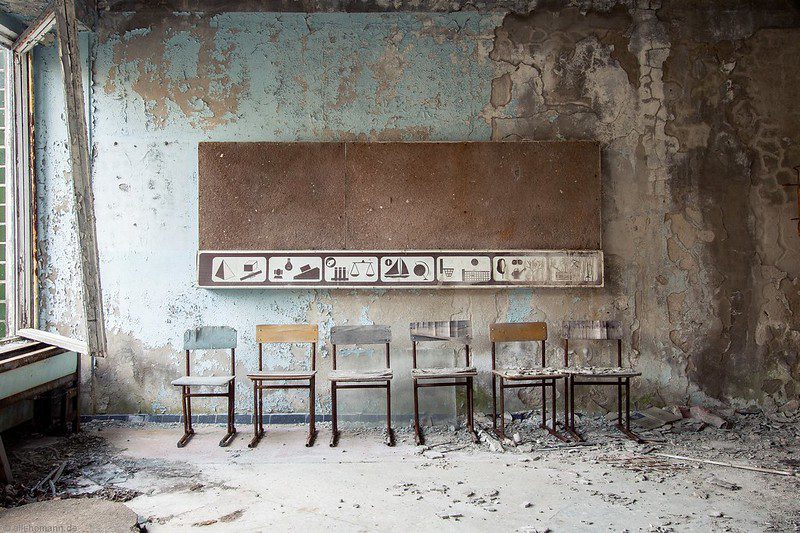Prepared for the February 18 – 19, 2016 seminar, Transforming Violent Masculinities, organized by the winners of the 2015-2016 WPF Student Seminar Competition.
Preamble
One thing really struck me in the invitation letter to the World Peace Foundation seminar on Transforming Violent Masculinities, it was the following “Acknowledging that most men are not violent… men perpetrate a majority of violent acts around the world”. So, most men are not violent, yet despite this we are clearly more violent than women. It is an accurate statement and a door-opener to some of the complexities and tensions we face when trying pin-down the causality of men’s violence. Let me turn to my own research to help discuss some of these challenges.
I have been studying young men in youth gangs in Latin America and Caribbean, mainly in the poor neighborhoods of Medellín, Colombia, for the better part of a decade. I have sat down and talked to lots of young men in gangs, some whom had left gangs, and even their girlfriends and mothers. I have also spoken to young men who didn’t join gangs that came from the very same neighbourhoods and conditions of poverty. Is it possible to trace their trajectories to male adulthood and the processes of socialisation that led some into the gang whist not others? Yes, I think it is. Is it possible to draw up a neat list of causal factors to explain these processes? Well, that is a little more difficult, but it is something we should debate.
I will lay out some of these debates as I see them in this ‘memo’. The idea is to be provocative and to promote the co-construction of knowledge between us during the seminar. First, I will discuss gang violence where masculinities and urban exclusion intersect; second, I will attempt to add some texture to barrio masculinities; third, I will ask why some young men join the gang and become violent; and finally, I will try and answer why majority of young men do not join the gang.
Gang violence at the intersection of masculinities and urban exclusion
The homicide rate in Latin America and Caribbean is the highest in the world. Geographically, this violence concentrates in the poor barrios, or neighbourhoods of the region’s cities. The youth gangs found at the urban margins are paradigmatic of this violence, and so ubiquitous that they have even been perceived as a collective movement and in revolutionary terms (Baird & Rodgers 2015; Beall et al. 2013). Neither gangs nor violence show signs abating in Latin America, propelling the ‘gang issue’ up the political pecking order, where they feature heavily in populist rhetoric and sensationalist media reports, and recently have even been labelled as ‘terrorists’ (Wolf 2015).
Whilst conditions of socio-economic exclusion have been associated with gang prevalence, gang formation itself cannot be ascribed to a single nor determinant factor, but rather to a range of correlational but not clearly identified causal factors such as; organised crime, drug trafficking, the proliferation of firearms, weak governance and rapid urbanisation. Some contend that the strongest correlates of gang membership occur at a subjective level, including exposure to domestic and community violence, delinquency and drugs (Higginson et al. 2015: 6). However, precise accounts of gang formation should be critically appraised as they can emerge in a variety of ways and circumstances.
Despite the caveats posed by gang complexity, there is a remarkable consistency to gang demography across the region: poor young men overwhelming make up gang membership. Even a cursory inspection shows that the ‘poor, male, youth’ profile remains robust outside of Latin America. Although masculinities alone cannot account for gang membership, it is clear that processes of male socialisation are central to understanding why gangs persist. However, empirically grounded research into ‘gang masculinities’ in the region is rare.
The texture of barrio masculinities
Masculinities are multifaceted and situationally mutable. Men are not permanently committed to one particular pattern of masculinity. It would be an exhausting project for even the most macho man to perform machismo all of the time. For example, in Mexico and Central America a man may perpetrate street violence but caringly look after his children in private and public (Gutmann 1996; Lancaster 1992). I myself have interviewed gang members who appeared to be caring fathers, sons and brothers, but who also intimidated, robbed and murdered on the streets. Likewise, even the most progressive male youths I spoke to in Medellín’s poor neighbourhoods occasionally showed a flicker of machismo, especially when talking with or about women.
This indicates that the micro-level practices and textures of barrio masculinity can be confounding and contradictory. It is important not to idly reproduce male stereotypes, impose narratives or as Alves (2009) suggests, ‘make’ masculinity from the outside, but we must be unambiguous in our critique of patriarchy. It is clear that machismo is the widespread and principle form of sexism, misogyny and patriarchy in Latin America (Gutmann 2003; Valenzuela Arce 2010). Theidon reflects upon such conundrums whilst researching demobilising combatants in Colombia: “militarised masculinity [is a] fusion of certain practices and images of maleness with the use of weapons, the exercise of violence, and the performance of an aggressive and frequently misogynist masculinity. While I do not deny the diversity that exists within the group of former combatants with whom I work, neither can I deny the hegemonic masculinity these men have in common” (Theidon 2007: 5).
The tension between the diversities and hegemonies of masculinity adds complexity to gang membership. However, it also adds explanatory power: the cultural repertoire of machismo at a macro level filters through to local gendered orders in Medellín, which frames the strategies boys and men use to negotiate the masculine terrains of their everyday lives. Boys’ and men’s expression of masculinity is situationally specific, as such we can speak of a barrio masculinity, but one that remains connected to broader societal norms. The gang is a conduit for social relations, and a gendered way for disenfranchised youths to inhabit the city, which is why it is vital to understand violence at the intersection between class and masculinity.
Becoming violent: A masculine logic of gang membership
A short explanation
The conspicuous consumption and riches of gangsta glamour standout as preferential pathways to manhood against the backdrop of exclusion in poor neighbourhoods across Latin American and Caribbean. Therefore, the sensible question to ask would be, why wouldn’t you join a gang in those conditions? I often try to put myself in the shoes of the young men I spoke to, what would I do in their position at the age of 14 or 15, would I join the gang too?
What I am suggesting is that there is a logic to the ganging process when the conditions are right. Young men strategically negotiate a social world of violence and exclusion in search of desired outcomes, and when doing so the gang often appears to be a good opportunity or their ‘first way out’ of poverty, as Pepe, a youth who worked at a community-based organisation in Medellín explained:
It’s easier to join gangs because there’s economic motivation. I think that when a boy has difficulties at home [they] run out of ideas and think ‘what am I going to do?’ An opportunity [to join a gang] seems like a good one in that situation, the first way out, their first option (11/04/2008).
To be a ‘respected man’ in these settings, as described by one youth, is closely associated with hegemonic masculinities: “being strong, bringing home money, being a protector, having power, being respected, being a womaniser, a chauvinist, macho, brash (sic)”(Sammy, 03/06/2008). The gang emerges as a localised contestation of emasculation, a way of protecting their dignity, the last refuge of the poor.
Young men ‘instrumentalise’ gangs to contest emasculation
I always asked gang members the question ‘why did you join the gang?’ What stood out from their responses was the pragmatic use of the gang as a reputational and asset accumulating project. The prospect of being poor and unemployed often evoked a deep fear of being looked down upon by the community, as one gang member said “You’ve got to be able to support the family, your kid an’ all that. You need to have a job in a business or something like that so the community doesn’t see you like a tramp, an undesirable who does nothin’, that’s shit. It would be cool to have a good job” (El Peludo, 03/04/2008).
For many young men, the status and asset accumulation through the gang had a dual purpose; it was ‘instrumentalised’ by to contest indignity and emasculation, but it also served as an outlet for youthful ambition, a way for boys to become a ‘successful’ adult. Gangs are often perceived by the young men who enter them as sites of opportunity, which outweighed the risks of joining. Gangs can be outlets for ambition, empowering and socially cohesive for their members, spaces where disenfranchised youths can ‘subversively recodify’ any feelings of emasculation (Foucault, 2000: 122-123)[1]. Joining the gang should not be understood as aberrant or maverick, but rather as a logical use of agency for excluded boys in settings that restrict legal masculinisation opportunities.
Here I will add a note of caution. Whilst we should be critical of the conditions that give rise to gangs, we should also be weary of idealising them as an emancipatory project given the negative impact of violence and crime upon populations living in the poorest neighbourhoods, and their capacity to reproduce and entrench local machismo and patriarchy as a whole.
Aspiration and masculine capital: ‘In the end there’s nothing like being in a gang’
Duros (lit. tough guys), the feared / respected and somewhat mythical gang leaders, are potent symbols of this masculinity.
Pepe: Imagine a kid who goes hungry at home and they see the local duro who’s got a motorbike, designer shoes, girls, expensive clothes, respect, recognition, power. So of course the young kids round here say ‘wow, this is the ticket!’ (11/04/2008).
It is unsurprising then that almost everyone I spoke to in Medellín’s barrios could name the local duro, but their notoriety or ‘fame’ depends upon the accumulation and display of girls, guns, clothes, respect, et cetera, which I term masculine capital. The gang is the stand out supplier this capital and hence a local standard bearer of masculinity, which makes them attractive sites of male status-building for boys. I believe that gangs also occupy significant ontological ground in defining barrio masculinity for male youths, which was often reflected in their narratives: “The gang is famous and that inflates your ego. In the end there’s nothing like being in a gang, and then we’ve got girls on our motorbikes ‘with the pussy on the back’ as the saying goes” (Havana 12/06/2008). One gang member demonstrated how the gang inflated his esteem by saying rather poetically “from up here [on the drugs corner overlooking the city] we’re just like the bourgeoisie” (El Peludo 03/04/2008).
Getting the girl
I recognise that gang members relationships with their girlfriends and partners are complex (Baird 2015), but here I want to look at them from the perspective of youths joining the gang. Almost all of the gang members I spoke to talked about ‘getting the girl’, which required making a name for themselves in the gang. On nights out in the city I witnessed gangs attracting noticeable numbers of girls and young women who would become their mosas (from hermosas, beautiful), their weekend girlfriends (the reasons for which we can debate). The hetero-normative triumph of ‘getting the girl’ was a key masculine capital and extremely powerful in displaying masculine success for these young men.
Yeah, well [I joined the gang] for a lot of reasons. I was looking for easy money, for luxuries, women. Women today are only interested in material things, to be with a duro to feel like they’re with someone with power. Gang members go for the young girls who want to go to parties (Aristizabal 15/07/2008).
We should be cautious not to blame vulnerable young women for gang membership, but there is clearly a need to grasp the dynamics of their interactions with gang members better. Little is understood in Latin America about why so many girls and young women are seemingly attracted to gang members when the risks of sexual abuse and rape are widespread, nor how this might contribute to cycles of gang membership and gang culture.
How gang violence shapes male identity
The modus operandi of youth gangs in Medellín revolves around territorial control for retail drugs sales, racketeering and extortion, what Glebeek and Koonings call the ‘micro-monopolies’ of the street (2015: 4). Controlling drug corners requires the the use of violence against rival gang encroachment, whilst extortion requires the systematic intimidation of the local population. This external use of violence is reflected within the internal machinations of the gang, as one twelve year old gang member explained; the duro reaches his position of gang leadership by being el más malo, the ‘badest’, capable of publically displayed and often spectacular violence. This means eschewing any traces femininity or non-hegemonic masculinity such as being a loquita, a pussy. But a duro is not a simple thug, they must be dextrous enough to avoid arrest, being killed, and demonstrate good management of gang finances by keeping the money rolling in for the troops (Junior Carrito, 19/06/2008).
The creation of duro ‘badness’ is a process of identity formation and becoming, which promotes the “strategic essentialisation” of masculinity (after Garot 2015: 158). Being a duro requires the essentialisation of machismo, a process carried out within the gang. This reflects soldiering, where the capacity for violence is a rite of passage and a definitive assertion of male adulthood. Semiotically, the gun represents ‘badness’ and the capacity for violence “Where picking up a gun for the first time gives you power”, implies “putting on the big trousers”, and “feels like sitting on a throne” (El Peludo 03/04/2008; Notes, 16/07/2008; Rasta, 12/11/11). The mutually reinforcing relationship between gang violence and machismo is an interesting point for further debate.
Socialisation into the gang
The view that socialisation processes are central to gang formation is empirically supported (Atkinson-Sheppard, 2015; Gayle & Mortis, 2010; Rodgers & Baird, 2015). That said, this is far from a straightforward process. The causality of gang membership is notoriously slippery, there are no cut-and-dry determinants to gang membership to explain why some youth socialise into, or conversely, away from gangs. Of the gang members I interviewed in Medellín, some displayed notable agency when joining the gang, albeit with diverse motivations. At times they were driven by ambition, and at others by desperation connected to poverty or challenging family environments. Yet others showed little agency, going with the flow of peer groups and unwittingly ending up in gangs. “When we joined we were just kids, stealing a few things now and then, we weren’t an armed group nor nothin’, but from one moment to the next we turned into a gang” (El Loco 03/06/2008). Some felt swept into gangs by the sheer omnipresence of violence and conflict in their neighbourhoods, where they had “encountered death many times. Just by living in this neighbourhood you’re part of the war” (Ceferino 05/11/11). This often made it difficult for them to clearly explain why they had joined the gang, and as one gang member suggested, even the “best kids who’ve got everything at home and have other opportunities” can end up in the gang (Armando 18/06/2008).
It is clear that aspects of socialisation are pivotal to entry into the gang. 35 out of 40 gang members interviewed referred explicitly to the importance of friends, family and street contacts in this process, often entering the gang incrementally “getting sucked in little by little” as “the energy of the other person begins to stick to you” (Jesus, 15/07/2008; Tino, 20/11/11), rather than as a single-step process from outsider to insider. Tellingly, none of the gang members interviewed joined a gang outside of their local community confirming the notion of the ‘organic’ gang. Street socialisation is integral to gang reproduction, constituted through life-long friends, contemporaries and family in the host neighbourhood.
Staying out of the gang
Gang-work: A job for ‘real’ men
The Medellín gang is predominantly a homosocial ‘enactment’ (Kimmel, 2004), a space of male socialisation and hetero-normativity, a site of essentialised machismo. Non-conformitive identities such as homosexuality, femininities and women are broadly excluded “because of the chauvinist gang culture, men won’t let them in” (Jose 20/07/2008).
It was telling that across the eight-year span of my fieldwork I did not encounter one (openly) homosexual male, girl or woman who was a ‘core member’ of a gang; by that I mean they did not take part in gang violence systematically nor did they have significant control over the gang’s economic activities. ‘Gang-work’ related to money and violence was definitively ‘men’s work’, controlled by male gang members and duros but never a dura, demonstrating the predominance of male homo-socialisation in gangland violence. More women are found in gangs like the maras in Central American but this was not the case in Medellín. I am not suggesting that gangs never engage with girls and women, far from it. Within the gang their roles were also gendered, tending to be more ‘administrative’ such as transporting drugs, money, arms, and munitions around communities, football stadiums or in and out of jails, or working as informants or collectors of extortion monies. (Although Riaño-Alcalá did find evidence for violent women in Medellín’s poor neighbourhoods [2006]). They were also mothers, sisters and wives, but gangs’ interactions with girls and women were most visible in social spaces such as the abovementioned mosas or short-term girlfriends.
Why don’t more boys join the gang if there is so much masculine capital to be had?
There has been significant scholarly effort to understand violence as a necessarily reproductive and even epidemiological phenomenon, however, violence is complex and not necessarily self-perpetuating. Counter-intuitively, violence can be interruptive as well as reproductive. The majority young men in Medellín’s poor barrios do not actually join gangs[2], and the question is still open as to what percentage of those within a gang are ‘core members’ and systematically violent. The question of why most poor youths do not join gangs or why violence is not more reproductive is often overlooked by gang researchers. These are important questions Gary Barker asked over a decade ago (2005). I would posit, many of the answers we are looking for in terms of reducing gang violence actually lie with the under-studied majority of non-gang and non-violent youth. We may even find some answers if we research why some gang members are not violent whilst others are? Certainly we should ask, if the gang is such a compelling site for manhood in these contexts why do the majority of youths not join up? Allow me put some ideas forward:
- There is always a range of competing pathways to male adulthood and many youths I interviewed, gang members and non-gang members alike, also respected men who earned money legally. The gang clearly stands out as an option, or even the ‘best option’ for many boys, but it will always be a minority employer amidst a multitude of pathways to manhood in these communities.
- The non-gang youths I spoke to gave a number of explanations for not joining gangs, which included; positive influences at home, in school, at church or in other communal spaces such as youth organisations. These acted as buffers to gang entry by fostering a moral rejection of the gang and helping them to socialise away from gang circles.
- As a whole non-gang youths’ personality traits were broadly hetero-normative, but they were less likely to fit into the macho gang frame. A number of these young men were self-confessed ‘geeks’ or ‘swots’, some were particularly religious, others had been rigorously disciplined at home and were teased as ‘mummies boys’. Two were homosexual. It seems intuitive then that some boys and young men will be ‘put off’ by the machismo and dangers of gang-life that others perceive as attractive masculine capital. One youth explained that he did not seek revenge murder of his friend by a gang because “I’ve never had the mettle for that stuff, I mean, I’ve never been capable of responding violently to anyone. I’m not the type to try and put one over on anyone” (Pelicorto 10/06/2008). Ergo, the spectre of gang related violence including death, incarceration, injury, trauma, and machismo itself, actually prevent many youths from joining.
References
Alves, J.A., 2009. Narratives of Violence: The White ImagiNation and the Making of Black Masculinity in City of God. Sociedade e cultura, 12(2), pp.301–310.
Atkinson-Sheppard, S., 2015. The gangs of Bangladesh: Exploring organized crime, street gangs and “illicit child labourers” in Dhaka. Criminology and Criminal Justice . Available at: http://crj.sagepub.com/content/early/2015/11/18/1748895815616445.abstract.
Baird, A., 2015. Duros & Gangland Girlfriends: Male Identity and Gang Socialisation in Medellín. In J. Auyero, P. Bourgois, & N. Scheper-Hughes, eds. Violence at the Urban Margins in the Americas. Oxford: Oxford University Press.
Baird, A. & Rodgers, D., 2015. Are Latin American gangs the new revolutionaries? ResearchGate.net.
Barker, G., 2005. Dying To Be Men: Youth, masculinity and social exclusion, London: Routledge.
Beall, J., Goodfellow, T. & Rodgers, D., 2013. Cities and conflict in fragile states in the developing world. Urban Studies, 50(15), pp.3065–3083.
Garot, R., 2015. Gang-banging as edgework. Dialectical Anthropology, 39(2), pp.151–163. Available at: http://link.springer.com/10.1007/s10624-015-9374-5 [Accessed October 21, 2015].
Gayle, H. & Mortis, N., 2010. Male Social Participation and Violence in Urban Belize: An Examination of Their Experience with Goals, Guns, Gangs, Gender, God, and Governance, Belize City: Ministry of Education.
Glebbeek, M.-L. & Koonings, K., 2015. Between Morro and Asfalto. Violence, insecurity and socio-spatial segregation in Latin American cities. Habitat International. Available at: http://www.sciencedirect.com/science/article/pii/S0197397515001691 [Accessed November 24, 2015].
Gutmann, M.C., 2003. Changing men and masculinities in Latin America, Durham: Duke University Press.
Gutmann, M.C., 1996. The Meanings of Macho: Being a Man in Mexico City, Berkeley: University of California Press.
Higginson, A. et al., 2015. Preventive Interventions to Reduce Youth Involvement in Gangs and Gang Crime in Low- and Middle-income Countries: A Systematic Review,
Lancaster, R., 1992. Life is Hard: Machismo, Danger and the Intimacy of Power in Nicaragua, Berkeley: University of California Press.
Riaño-Alcalá, P., 2006. Dwellers of Memory: Youth and Violence in Medellín, Colombia, New Brunswick: Transaction Publishers.
Rodgers, D. & Baird, A., 2015. Understanding Gangs in Contemporary Latin America. In S. H. Decker & D. C. Pyrooz, eds. The Handbook of Gangs. New York: Wiley.
Theidon, K., 2007. Transitional Subjects: The Disarmament, Demobilization and Reintegration of Former Combatants in Colombia. International Journal of Transitional Justice , 1 (1 ), pp.66–90. Available at: http://ijtj.oxfordjournals.org/content/1/1/66.abstract.
Valenzuela Arce, J.M., 2010. Jefe de jefes. Corridos y narcocultura en Mexico, Mexico City: Colegio de la Frontera. Available at: http://www.amazon.com/jefes-Corridos-narcocultura-Spanish-Edition/dp/6074790345 [Accessed October 20, 2015].
Wolf, S., 2015. ¿Hay terroristas en El Salvador?”. Distintas Latitudes. Available at: http://www.distintaslatitudes.net/hay-terroristas-en-el-salvador [Accessed October 16, 2015].
Notes:
[1] Foucault talks of the ‘subversive recodification’ of power relations as a micro-level subjective process.
[2] In a survey I conducted in a local school, 6 out of 43 male youths (17%) with an average age 17 self-identified as gang members. Locals estimated that 5-10% of the male youth population were gang members, another 2013 study identified 11.3% ‘aggressors’.



